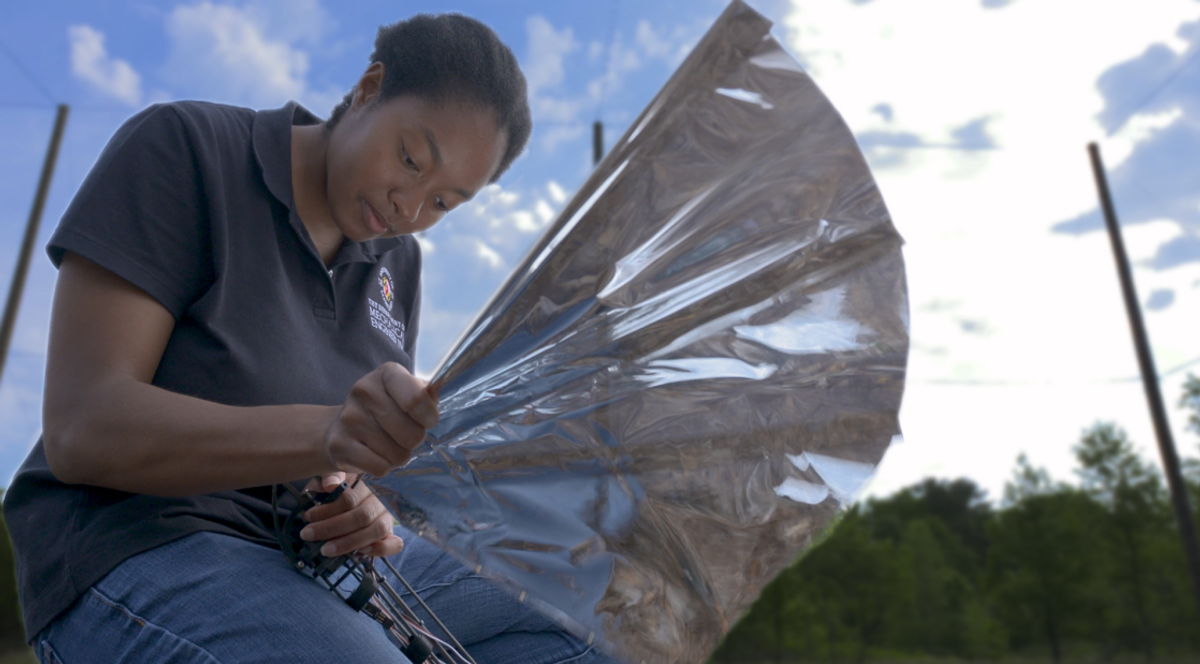Inspired by the beauty and flying ability of birds, Leonardo da Vinci strived centuries ago to create a human-powered flapping-wing flying machine. But his designs, which da Vinci explored in his Codex on the Flight of Birds, were never developed in any practical way. Even today, mimicking bird flight still presents challenges due to the physiological complexity of a bird’s flapping wings.
For years, researchers at the University of Maryland’s A. James Clark School of Engineering have been moving ever closer to faithfully imitating bird flight with Robo Raven, the first bird-inspired unmanned aerial vehicle (UAV) that has successfully flown with independent wing control. Robo Raven can also be programmed to perform any desired motion, enabling the UAV to perform aerobatic maneuvers.
Lena Johnson, who is pursuing her Ph.D. in mechanical engineering at the Clark School, is working on the current iteration of the aerodynamic robotic bird, known as Robo Raven V. The doctoral student believes Robo Raven gives her a platform to make the impossible possible by designing a UAV with greater controllability and likelihood of sustained wing-powered flight than other similar vehicles.
Johnson hopes that this version’s expanded maneuverability, developed takeoff capability, and added propellers for thrust production will aid the UAV in areas she’s researching, such as disaster response and wildlife monitoring.
With more than 200 esteemed faculty members, over $137 million in annual research expenditures, and cutting-edge facilities that include the Unmanned Aircraft Systems Test Site and Robotics Realization Laboratory, the Clark School enables graduate students to pursue a wide variety of research interests within engineering. When Johnson first decided to pursue her Ph.D at the Clark School, she wanted to learn about how to build, design, and program bioinspired robotics such as Robo Raven.
“Robo Raven has given me an entire platform to explore how engineers can take advantage of avian flight to improve drone capabilities,” she says. “As a Ph.D. student, my research is focused on achieving something new with this UAV platform that has already made aviation history by flying on wings that can move independently of each other.”
Johnson says she would love to use the skills she developed by working on Robo Raven in the future for robotics used in search-and-rescue, marine exploration, and archaeological contexts.
Robo Raven was pioneered in 2008 by Clark School Professors S.K. Gupta (now at the University of Southern California) and Hugh Bruck. Gupta and Bruck wanted to develop a robotic bird that was quick and multifaceted for many applications, both civilian and military.
Learn more about Ph.D. programs at the Clark School and the prestigious Clark Doctoral Fellows program.
Receive the latest engineering news from the Clark School in your inbox.



